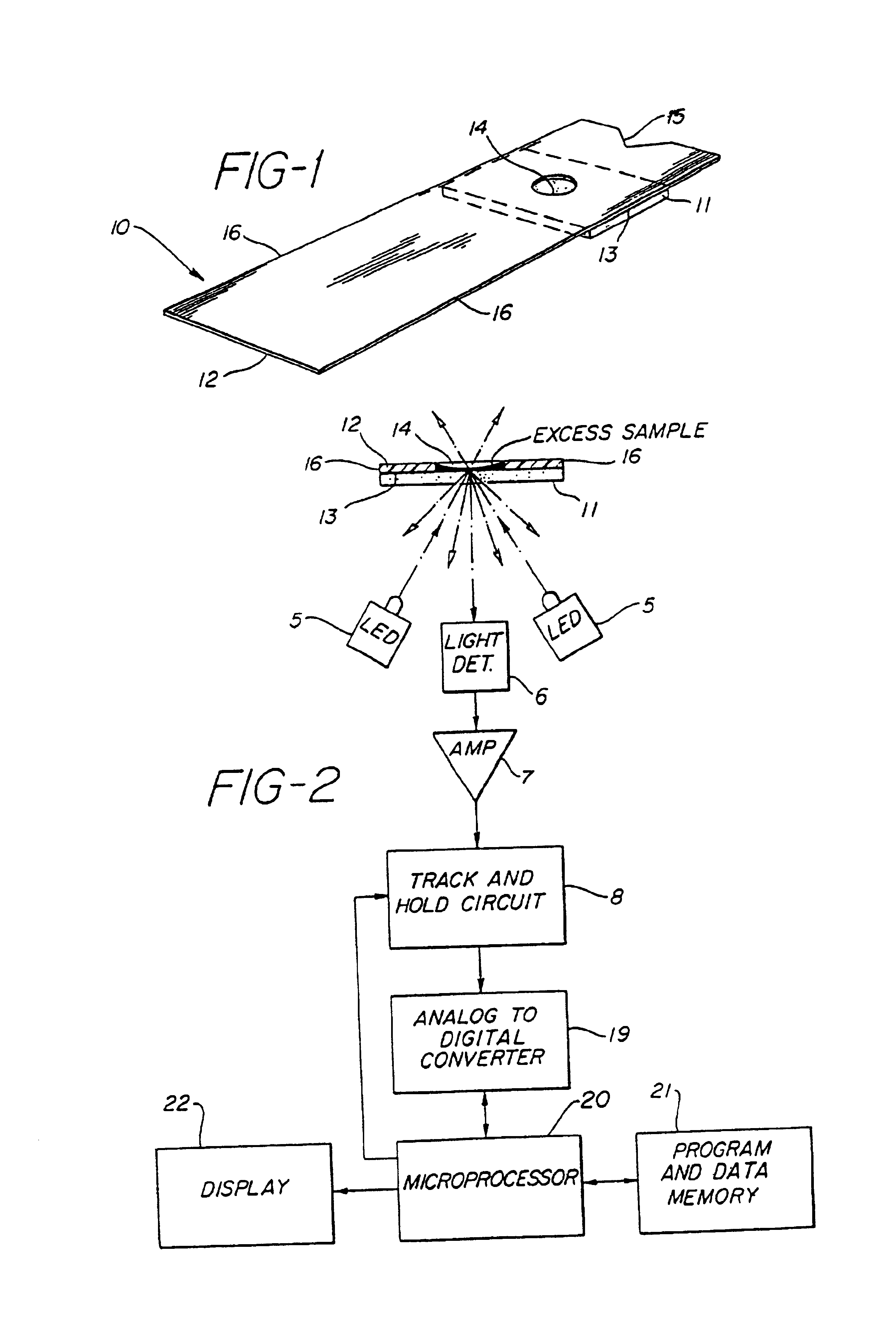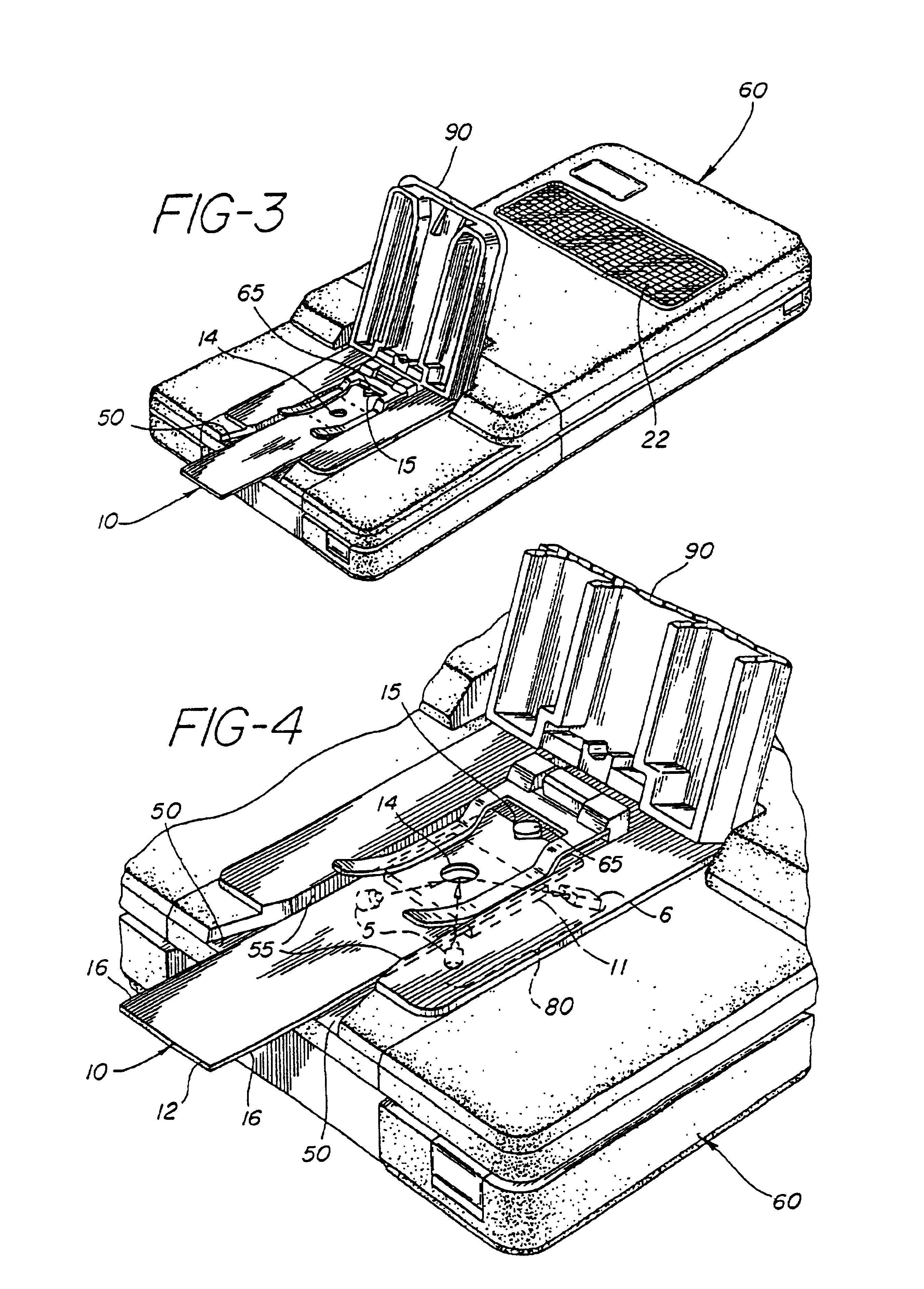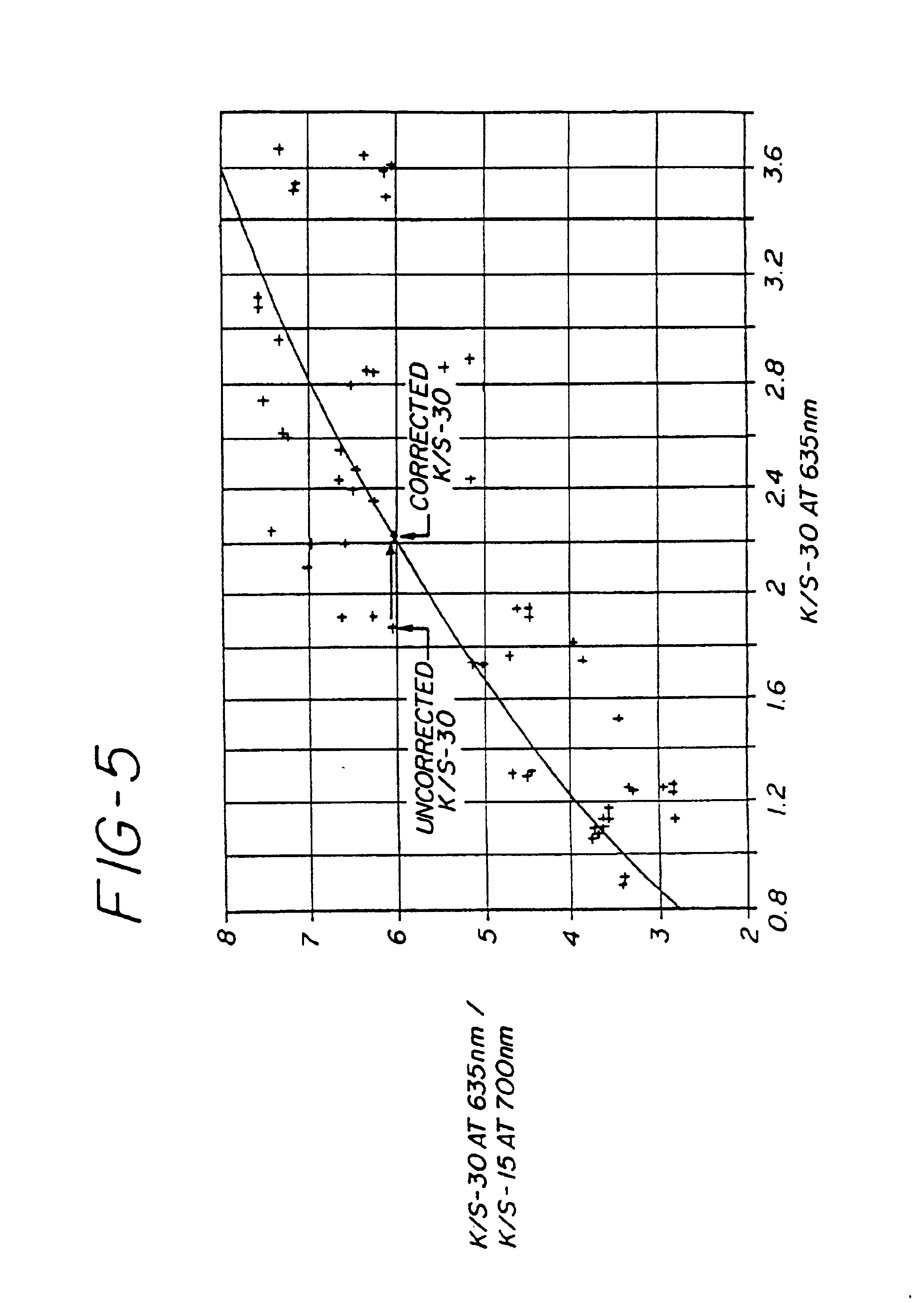Method for the determination of glucose employing an apparatus emplaced matrix
a matrix and apparatus technology, applied in the field of whole blood, can solve the problems of difficult to precisely determine the apparatus employed, complicated apparatus, and limited application to laboratory personnel, and is generally not availabl
- Summary
- Abstract
- Description
- Claims
- Application Information
AI Technical Summary
Benefits of technology
Problems solved by technology
Method used
Image
Examples
example i
Reproducibility:
[0112]One male blood sample (having a hematocrit level of 45) was used to collect the reproducibility data using the presently preferred embodiment of the system, called the MPX system. The results are set forth in Tables 3-5.
[0113]
TABLE 3Reproducibility of a Single Wavelength SystemAverage (mg / dl)*S.D. (mg / dl)% C.V.*****YSI (mg / dl)20 sec.30 sec.20 sec.30 sec.20 sec.30 sec. 2523.123.02.12.049.19.0 5553.353.23.193.326.06.31011011013.03.33.03.0326326.632713.39.84.13.050150317.13.4690675284.15810813374.5*S.D. = Standard Deviation **% C.V. = Covariance (measured by percentage) ***YSI = Yellow Spring Instrument Glucose reading
[0114]
TABLE 4Reproducibility of a Dual Wavelength SystemAverage (mg / dl)S.D. (mg / dl)% C.V.YSI (mg / dl)20 sec.30 sec.20 sec.30 sec.20 sec.30 sec. 25 25271.341.555.45.7 55 5557.42.582.624.74.6101101101.52.552.182.52.132633233015.07.14.52.150150521.34.269068722.83.381081730.43.7
[0115]
TABLE 5Reproducibility of a 3.0 mm Diameter Aperture% C.V.YSI (mg / dl)4....
example ii
Recovery:
[0120]For comparison of the present preferred method called MPX against a typical prior art method using a Yellow Springs Instrument Model 23A glucose analyzer manufactured by Yellow Springs Instrument Co., Yellow Springs, Ohio (YSI), blood from 36 donors was tested. The donors were divided equally between males and females and ranged in hematocrit from 35 to 55%. The blood samples were used within 30 hours of collection, with lithium heparin as the anti-coagulant. Each blood sample was divided into aliquots and spiked with glucose to give 152 samples in the range of 0-700 mg / dl glucose. Each sample was tested in duplicate for a total of 304 data points.
[0121]Response curves were constructed for the appropriate equation (see Tables 1 and 2). These MPX glucose values were then plotted vs. the YSI values to give scattergrams, as seen in FIGS. 6a and 6b for the Single Wavelength System, and FIGS. 7a through 7d for the Dual Wavelength System.
[0122]Comparison of MPX Systems: For...
example iii
Stability:
[0133]Most of the bench-scale work carried out in optimizing stability was completed using hand-dipped 0.8μ Posidyne™ membrane disks. The specific dye / enzyme formulation was set forth previously.[0134]1. Room Temperature Stability: This study attempted to chart any change in response of the 0.8μ Posidyne™ membrane reagent stored at 18° C.-20° C. over silica gel desiccant. After 2.5 months there was no noticeable change as measured by the response of a room temperature sample vs. the response of a sample stored at 5° C. Each measurement represented a glucose range of 0-450 mg / dl.[0135]2. Stability at 37° C.: Stability study using the same reagent as the room temperature study was carried out. The differences in glucose values of reagent stressed at 37° C. vs. room temperature reagent, for strips stressed with and without adhesive, was plotted over time. Although the data was noisy, due to the poor reproducibility of handmade strips, the stability was excellent for strips wh...
PUM
| Property | Measurement | Unit |
|---|---|---|
| diameter | aaaaa | aaaaa |
| diameter | aaaaa | aaaaa |
| diameter | aaaaa | aaaaa |
Abstract
Description
Claims
Application Information
 Login to View More
Login to View More - R&D
- Intellectual Property
- Life Sciences
- Materials
- Tech Scout
- Unparalleled Data Quality
- Higher Quality Content
- 60% Fewer Hallucinations
Browse by: Latest US Patents, China's latest patents, Technical Efficacy Thesaurus, Application Domain, Technology Topic, Popular Technical Reports.
© 2025 PatSnap. All rights reserved.Legal|Privacy policy|Modern Slavery Act Transparency Statement|Sitemap|About US| Contact US: help@patsnap.com



